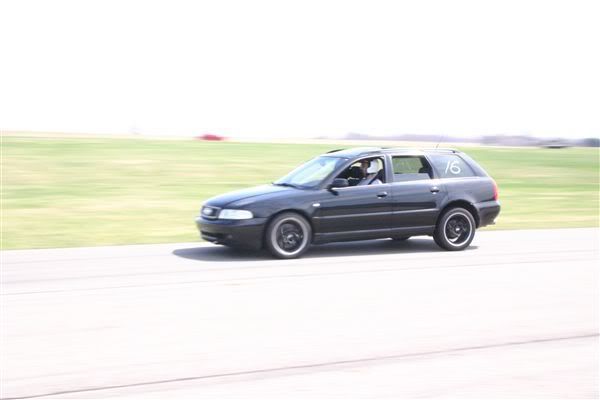
Originally Posted by
gotaudi

really? So if you increase to diameter of the rotor by 33% you decrease the breaking distance by 33% ???
Absolutely not. Increasing rotor size does nothing to increase the tire's ability to slow the car. That ability is limited by traction and nothing more. Picture a powerlifter with an injured back or shoulder. No matter how great the force he can only apply a portion.
Increasing rotor size does do a few nice things including adding more mass to act as a heat sink, more interior and exterior cooling area, more leverage (brake torque), larger and/or longer area swept by the pads, etc. This is offset by the larger diameter which means you have a larger flywheel to accelerate and decelerate. This drawback is rarely a big deal and is often offset by weight reduction through the use of an aluminum hat.
This is a subject that quickly gets buried in data and that is why it is hard to understand. We've got to deal with static and dynamic weight distribution. If a car has bad brake dive then it puts more weight on the fronts which let them do more work and takes weight away from the rears so they can do less. If you limit brake dive this weight transfer is limited and the rears can do more work. How much of a difference is some labor intensive math best left to computer modeling.
For example, this is my car threshold braking at Gingerman Raceway. It is shown on stock sport suspension with A8 brakes, Carbotech Bobcat pads, and 235/45-17 Pilot Sports. The brake dive is quite bad and the rears didn't lock up or trigger the ABS. That was mostly because I let off at about 30-40 mph for the corner. With the coilovers (balanced KW V1) and everything else the same my brake distance dropped quite a bit. I didn't measure it but there are three brake markers and I was about even with the first rather than hitting the brakes while still approaching it. Keeping the car flatter lowered the stopping distance.
Now it gets a little trickier. I switched to more aggressive track pads (Carbotech Panther) and Toyo RA1 track tires but left everything else alone. I even ran the same rotors. The stopping distances were insanely short. An instructor rods with me to help me tighten up some lines and every time we passed the first and second brake markers he was stomping the floor and bracing for impact like a panicked driver's ed instructor. We never once dropped a wheel off the track. Again I didn't measure but I'd guess the distances were 50-100 feet shorter and we were coming in hotter since the tires let me carry more speed out of the previous corner. Where the math gets tricky is that the track tires have more grip which leads to more weight transfer so the rears were doing less work than with the street tires. If I switched to track pads in the rear they might have locked up or not been able to get up to operating temp and been even worse. The only way to really find out is to experiment or do the long math which still only gets you in the ballpark.

One thing I've always pondered is the way a lot of VWs sit lower in the rear. In theory that jacks weight to the rear and under threshold braking the rears would carry a little more weight and be able to do a little more work. I've got no idea how this would work in real life and it may compromise cornering which could lead to even slower lap times.
Anyone is welcome to ride along for a demonstration. I can be at the track most summer weeknights for test and tune and we might be able to borrow a Porsche for comparison. All I ask is that you have a helmet, no polyester, and an empty stomach.














 Reply With Quote
Reply With Quote











Bookmarks